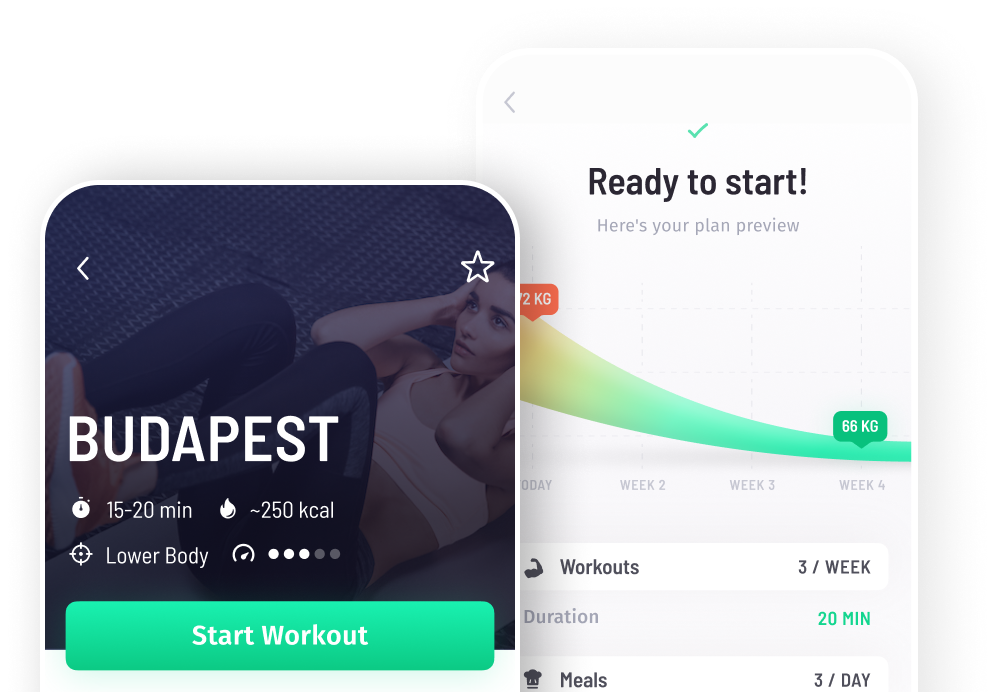If you want to create optimum health, you need to do regular exercise. Experts agree that most adults need to do a 30 minute workout, five times a week minimum. So, with that in mind, how should you structure your 30 minute workout?
30-Minute Workout Structure
Each workout should be split into three sections with a short stretch at the end. The three main parts are warm-up, cardio, and strength training.
Warm-Up - Five Minutes
Warming up your muscles is crucial to avoid injury. Working out when warm may also help your performance and exercise results. An effective warm-up routine consists of five minutes of light cardio such as jogging on the spot, jumping jacks, and high-knees.
Cardio - Ten Minutes
After doing five minutes of light cardio as your warm-up, step up the pace and move into your cardio. You can repeat the same exercises as your warm-up or add in some jump-rope, burpees, mountain climbers, or jump squats. Feel free to include any exercise that gets your heart pumping and causes you to break a sweat. Cardio is vital for conditioning the lungs and heart, plus it helps to oxygenate the muscles and remove toxins from the body.
Strength Training - Fifteen Minutes
Strength training, also known as resistance training, consists of exercises that use force to build muscle. This force can be in the form of weights such as dumbbells, barbels, or kettlebells, or it can be your own bodyweight or even gravity. Try these resistance exercises as part of your strength training routine. Do three sets of 10-15 reps.
1: Sumo Squats
Sumo squats are an excellent move for toning the glutes, hip flexors, quads, hamstrings, calves, and inner thighs. Stand with feet wider than shoulder-width apart. Turn your toes out. Keeping your back straight and your chest elevated, bend your knees and lower down as if you were sitting back into a chair. Keep your knees tracking over your toes, inhale as you descend, and exhale as you push back up to standing.
2: Push-Ups
Push-ups are excellent for toning and strengthening your upper body - specifically your triceps, chest, shoulders, and abs. Come to a high plank position on your toes, with your hands underneath your shoulders. Engage your abs and extend your heels toward the wall behind you. Inhale and lower your upper body toward the floor by bending your arms, keeping your elbows tucked in towards your sides. Exhale as you push yourself back to the starting position. If this is too challenging, you can do the exercise on your knees instead of your toes.
3: Sit-Ups
Although sit-ups are predominantly used for toning the abs and waist, there are many different versions that can target the deeper core muscles. This is important for creating strength and balance, aiding posture, and protecting the back. To perform a classic sit-up, begin by lying on your back with your knees bent and your feet flat on the floor. Place your hands behind your ears and open your elbows out. Inhale, and as you exhale, firm your abs and come to a sitting position by lifting your back off the floor and your chest toward your knees. Exhale as you return to the starting position in a controlled descent.
Conclusion
Remember to stretch your muscles after working out. Stretching aids recovery and reduces DOMS – Delayed Onset Muscle Soreness. Try some gentle yoga poses such as Downward dog and Crescent lunge. Perform this beginner-friendly 30 minute workout five times a week for optimum health and wellbeing.
Did you enjoy this article? Share it!

